The Catalyst Killing - [23]
‘Someone she knew, in other words?’ I ventured.
Patricia shrugged disarmingly and shook her head at the same time.
‘It would certainly seem that it was someone she knew, but not just that. Most of us know one or two people we would rather not meet, but very few of us would suddenly flee in panic at sight of them in a public place. Marie Morgenstierne apparently saw someone she knew, and for one reason or another she immediately knew that he or she was carrying a gun that could be aimed at her at any moment. Who and what was it that Marie Morgenstierne saw yesterday evening? That is now the most pressing question. And it undeniably makes the fact that three of the four people we know were on the street have not come forward in response to the repeated call for witnesses on the radio and television even harder to fathom. Goodness knows what their reasons are. One would think…’
Patricia stopped mid-sentence and sat deep in thought for a while. She opened her mouth for a moment, then shut it firmly. I had learned during our last investigation that Patricia hated to make mistakes, and would therefore often keep her arguments to herself until she was absolutely certain they were watertight. So I tried to prompt her by asking a question and airing my own views.
‘Surely the shout indicates that at least one person on the street knew who she was?’
Patricia nodded.
‘Clearly at least one of them knew who she was, and I suspect others did too. The shout is a mystery in itself, which the blind witness alone cannot help to explain. She heard the shout and Marie breaking into a run almost simultaneously. Was the shout prompted by the fact that Marie suddenly started to run? Or did Marie start to run because she heard the shout? Or did something else happen that only two people on the street understood the significance of, making Marie break into a run and the other person shout her name?’
I ventured to comment that Kristine Larsen was a woman, had been in the vicinity, and knew Marie Morgenstierne. Patricia looked at me sharply.
‘That is certainly a possibility to be considered, and I can assure you that I have. But first of all, the blind lady is not entirely sure that the person who shouted was a woman. And secondly, there are many other women in the world who might equally have shouted to Marie. Did you for example ask whether Miriam Filtvedt Bentsen had an alibi for last night?’
I had to admit that I had forgotten to do so. I told myself that I had no reason to believe she had been at the scene of the crime, and what it is more, found it hard to believe that she had anything to do with the murder. But I was wise enough not to mention this to Patricia. Instead, I promised that I would ask her tomorrow.
‘Please do,’ Patricia said, without any apparent enthusiasm. Then she suddenly continued, ‘And ask her two more questions at the same time. One: was the window in the room where Falko Reinhardt and Marie Morgenstierne were sleeping big enough for Falko to have climbed out? Two: ask if she is absolutely sure that she fell asleep that night, and whether she can confirm Kristine Larsen’s statement that she did not hear Falko out in the hall from the time they went to bed until they discovered he was missing?’
I looked at Patricia in surprise and with something akin to disapproval.
‘Miriam Filtvedt Bentsen said clearly enough that she went to sleep around midnight, and Kristine Larsen, who had a headache, saw her lying there asleep. So surely there is no great mystery there?’
There was a pause while the maid came in to clear the plates after the main course and give us each a dessert plate of ice cream and cake. Even in this new age, Patricia was upper-class enough not to say anything while the servants were in the room. However, she drummed her fingers impatiently on the table to ensure it did not take too long, then eagerly continued her reasoning as soon as the maid had closed the door.
‘The boundary that defines sleep is blurred, to say the least. And saying that you have gone to bed is even vaguer. There is, however, a considerable difference between lying in bed with your eyes closed and being asleep, in that you are no longer aware of sounds and movements in the room. I am neither a clairvoyant nor paranoid, but while I am in no doubt that Miriam Filtvedt Bentsen had put down her book and closed her eyes two hours earlier, I do not think she was fast asleep at the point when it was discovered that Falko Reinhardt had disappeared. Nor, for that matter, do I believe that Kristine Larsen was lying awake because of a headache. She seems to have coped very well in the hours after it was discovered, despite the claimed headache and lack of sleep. And leaving the door open to ease a headache is a new one on me, as it increases the risk of noise. Ask Miriam if Kristine had wanted to keep the door ajar on previous nights at the cabin as well, and whether she had noticed any obvious signs of this supposed headache.’
I could not understand what she was driving at, but carefully noted down the questions on a piece of paper. Experience from earlier investigations had shown that Patricia’s apparently bizarre questions and whims could prove to be enormously important.
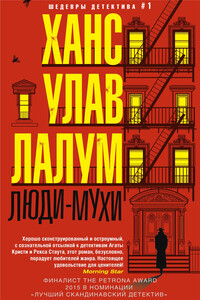
Убит бывший лидер норвежского Сопротивления и бывший член кабинета министров Харальд Олесен. Его тело обнаружено в запертой квартире, следов взлома нет, орудие убийства отсутствует. На звук выстрела к двери Олесена сбежались все соседи, но никого не увидели. Инспектор уголовного розыска Колбьёрн Кристиансен считает, что убийство, скорее всего, совершил кто-то из них. Более того, он полагает, что их показания лживы.
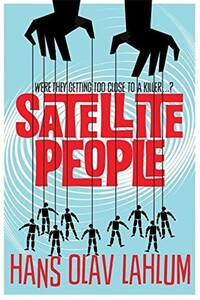
A gripping, evocative, and ingenious mystery which pays homage to Agatha Christie, Satellite People is the second Norwegian mystery in Hans Olav Lahlum's series. Oslo, 1969: When a wealthy man collapses and dies during a dinner party, Norwegian Police Inspector Kolbjorn Kristiansen, known as K2, is left shaken. For the victim, Magdalon Schelderup, a multimillionaire businessman and former resistance fighter, had contacted him only the day before, fearing for his life. It soon becomes clear that every one of Schelderup's 10 dinner guests is a suspect in the case.
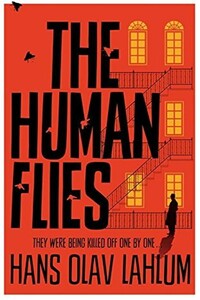
Oslo, 1968: ambitious young detective Inspector Kolbjorn Kristiansen is called to an apartment block, where a man has been found murdered. The victim, Harald Olesen, was a legendary hero of the Resistance during the Nazi occupation, and at first it is difficult to imagine who could have wanted him dead. But as Detective Inspector Kolbjorn Kristiansen (known as K2) begins to investigate, it seems clear that the murderer could only be one of Olesen's fellow tenants in the building. Soon, with the help of Patricia – a brilliant young woman confined to a wheelchair following a terrible accident – K2 will begin to untangle the web of lies surrounding Olesen's neighbors; each of whom, it seems, had their own reasons for wanting Olesen dead.
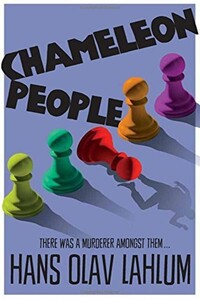
From the international bestselling author, Hans Olav Lahlum, comes Chameleon People, the fourth murder mystery in the K2 and Patricia series.1972. On a cold March morning the weekend peace is broken when a frantic young cyclist rings on Inspector Kolbjorn 'K2' Kristiansen's doorbell, desperate to speak to the detective.Compelled to help, K2 lets the boy inside, only to discover that he is being pursued by K2's colleagues in the Oslo police. A bloody knife is quickly found in the young man's pocket: a knife that matches the stab wounds of a politician murdered just a few streets away.The evidence seems clear-cut, and the arrest couldn't be easier.
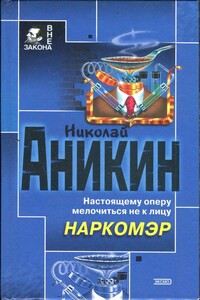
Тупик. Стена. Старый кирпич, обрывки паутины. А присмотреться — вроде следы вокруг. Может, отхожее место здесь, в глухом углу? Так нет, все чисто. Кто же сюда наведывается и зачем? И что охраняет тут охрана? Да вот эту стену и охраняет. Она, как выяснилось, с секретом: время от времени отъезжает в сторону. За ней цех. А в цеху производят под видом лекарства дурь. Полковник Кожемякин все это выведал. Но надо проникнуть внутрь и схватить за руку отравителей, наживающихся на здоровье собственного народа. А это будет потруднее…
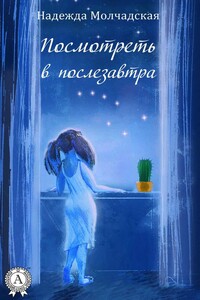
«Посмотреть в послезавтра» – остросюжетный роман-триллер Надежды Молчадской, главная изюминка которого – атмосфера таинственности и нарастающая интрига.Девушка по имени Венера впадает в кому при загадочных обстоятельствах. Спецслужбы переправляют ее из закрытого городка Нигдельск в Москву в спецклинику, где известный ученый пытается понять, что явилось причиной ее состояния. Его исследования приводят к неожиданным результатам: он обнаруживает, что их связывает тайна из его прошлого.
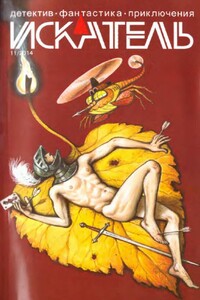
«ИСКАТЕЛЬ» — советский и российский литературный альманах. Издаётся с 1961 года. Публикует фантастические, приключенческие, детективные, военно-патриотические произведения, научно-популярные очерки и статьи. В 1961–1996 годах — литературное приложение к журналу «Вокруг света», с 1996 года — независимое издание.В 1961–1996 годах выходил шесть раз в год, в 1997–2002 годах — ежемесячно; с 2003 года выходит непериодически.Содержание:Анатолий Королев ПОЛИЦЕЙСКИЙ (повесть)Олег Быстров УКРАДИ МОЮ ЖИЗНЬ (окончание) (повесть)Владимир Лебедев ГОСТИ ИЗ НИОТКУДА.
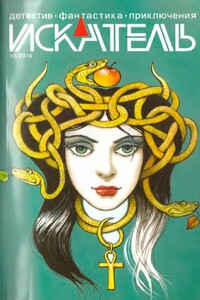
«ИСКАТЕЛЬ» — советский и российский литературный альманах. Издается с 1961 года. Публикует фантастические, приключенческие, детективные, военно-патриотические произведения, научно-популярные очерки и статьи. В 1961–1996 годах — литературное приложение к журналу «Вокруг света», с 1996 года — независимое издание.В 1961–1996 годах выходил шесть раз в год, в 1997–2002 годах — ежемесячно; с 2003 года выходит непериодически.Содержание:Олег Быстров УКРАДИ МОЮ ЖИЗНЬ (повесть);Петр Любестовский КЛЕТКА ДЛЯ НУТРИИ (повесть)
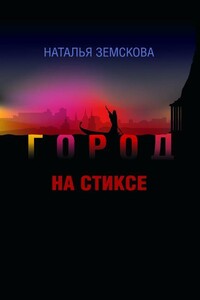
Наталья Земскова — журналист, театральный критик. В 2010 г. в издательстве «Астрель» (Санкт-Петербург) вышел её роман «Детородный возраст», который выдержал несколько переизданий. Остросюжетный роман «Город на Стиксе» — вторая книга писательницы. Молодая героиня, мечтает выйти замуж и уехать из забитого новостройками областного центра. Но вот у неё на глазах оживают тайны и легенды большого губернского города в центре России, судьбы талантливых людей, живущих рядом с нею. Роман «Город на Стиксе» — о выборе художника — провинция или столица? О том, чем рано или поздно приходится расплачиваться современному человеку, не верящему ни в Бога, ни в черта, а только в свой дар — за каждый неверный шаг.
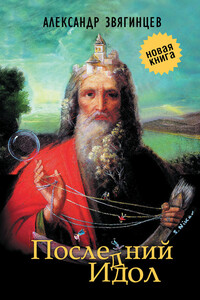
В сборник «Последний идол» вошли произведения Александра Звягинцева разных лет и разных жанров. Они объединены общей темой исторической памяти и личной ответственности человека в схватке со злом, которое порой предстает в самых неожиданных обличиях. Публикуются рассказы из циклов о делах следователей Багринцева и Северина, прокуроров Ольгина и Шип — уже известных читателям по сборнику Звягинцева «Кто-то из вас должен умереть!» (2012). Впервые увидит свет пьеса «Последний идол», а также цикл очерков писателя о событиях вокруг значительных фигур общественной и политической жизни России XIX–XX веков — от Петра Столыпина до Солженицына, от Александра Керенского до Льва Шейнина.